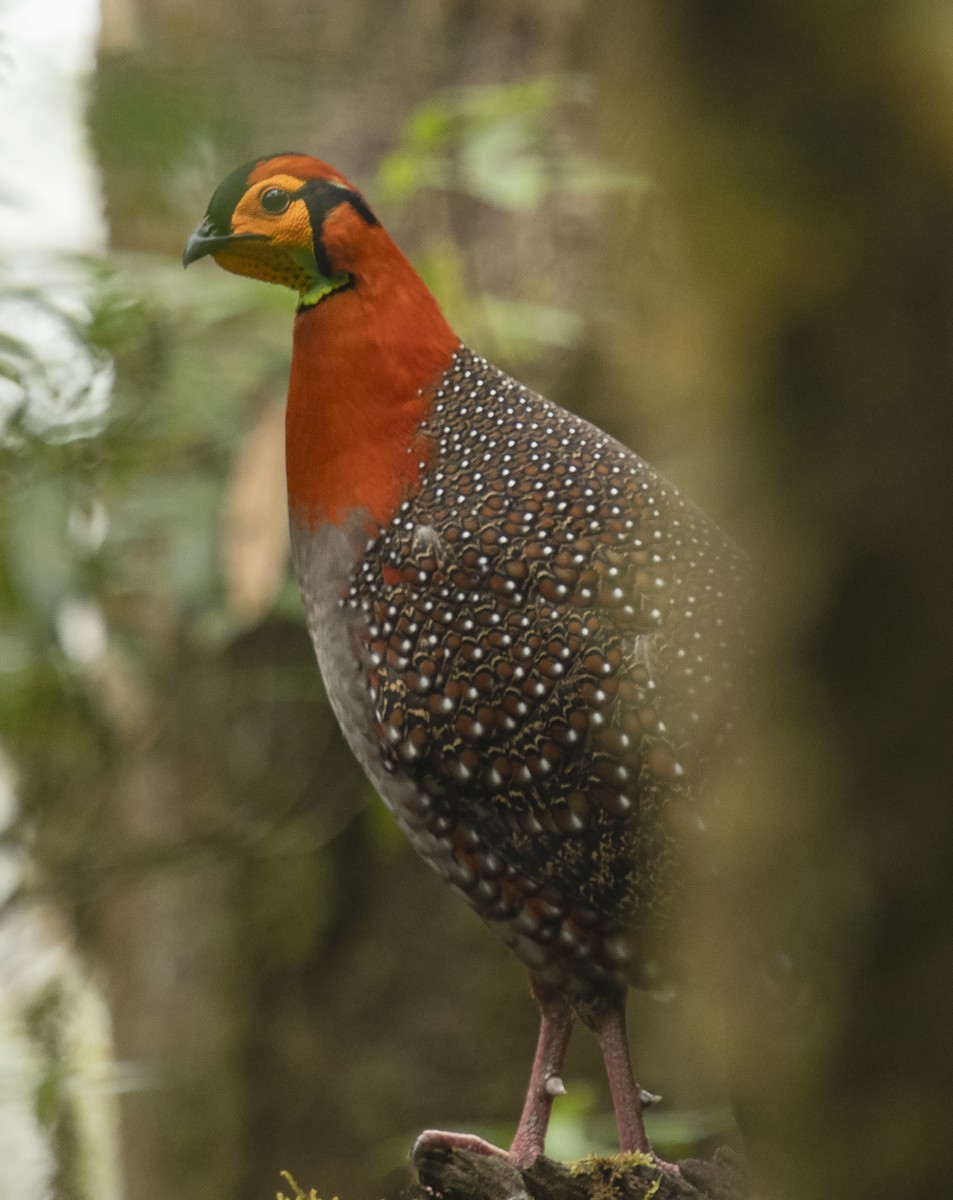Blyth's Tragopan
A species of Tragopans Scientific name : Tragopan blythii Genus : Tragopans
Blyth's Tragopan, A species of Tragopans
Botanical name: Tragopan blythii
Genus: Tragopans
Content
Description General Info
 Photo By Rofikul Islam
Photo By Rofikul Islam Description
Blyth's tragopan pheasant is the largest of the genus Tragopan. Like most pheasants, the male is brightly colored. It is recognized by its rusty red head, yellow facial skin, and that it is spotted with small white dots on its back called ocelli. A black band extends from the base of the bill to the crown coupled with another black band extending behind the eyes. Like the rest of the tragopans, males have two pale blue horns that become erect during mating. Its lappet, a decorated flap, hangs from the throat and is brightly colored. This lappet can be expanded and exposed during mating season as well. Females are not as brightly colored as the male tragopan, for they do not need the extravagant appearance to attract a male counterpart. Overall, they are dark brown with a mixture of black, buff and white mottling. Their simple and dull look is a protection mechanism from other animals, known as camouflage. It also allows the females to protect their young that are in the early stages of life. 
Size
70 cm
Nest Placement
Ground
Feeding Habits
Blyth's Tragopan's diet mainly consists of seeds, berries, fruits, and buds in the wild, showing a particular preference for berries and fruit. Captive blyth's Tragopan may also eat insects, worms, and small frogs. This bird species exhibits generalist feeding behaviors, foraging predominantly for plant material.
Habitat
Blyth's Tragopan typically inhabits densely wooded valleys and forested hillsides characterized by a rich presence of Rhododendron and a profuse herbaceous understorey. They show a preference for oak forests with a dense layer of herbs or bamboo undergrowth. Their habitat borders broadleaf and evergreen forests where shrubs and bamboo species, such as ringal, flourish in thickets, providing cover and food resources.
Dite type
Granivorous
General Info
Feeding Habits
Bird food type
Distribution Area
The animal's population is small and is believed to be decreasing at a rapid rate. Blyth's tragopan is located in many different areas, including Bhutan through north-east India, north Myanmar to south-east Tibet, and also China. The total population is estimated to be about 2,500 to 9,999 birds. This estimate is a very small number compared to some of its relative birds. Tragopan blythii normally flocks to wooded areas as it prefers the undergrowth of evergreen oak and rhododendron forests, and other dark, quiet places. This bird has a higher elevation than most birds. 
Species Status
There is already some habitat set aside for the T. blythii to survive. These areas include two wildlife sanctuaries and a small reserve in Nagaland, along with some other small areas for the bird to survive. This species is legally protected in all countries in which it is found. Conservation awareness plans need to be implemented in all areas and more people to enforce the laws that are already set in place. With these small sub communities, which are scattered over the habitat areas of the pheasant, it is becoming more and more difficult for the birds to reproduce with the genetic differences they need to survive. The Blue Mountain National park in Mizoram, India is currently taking surveys of how many different Blyth's tragopan can be heard and seen in the area. The population was considered to be about 500 and 5000. The continuing monetization for the Blyth's tragopan is essential for the conservation management aspect of the pheasant. Together with Blue Mountain and the organization proposal there will be a way to help the Blyth's tragopan. 

 Photo By Rofikul Islam
Photo By Rofikul Islam